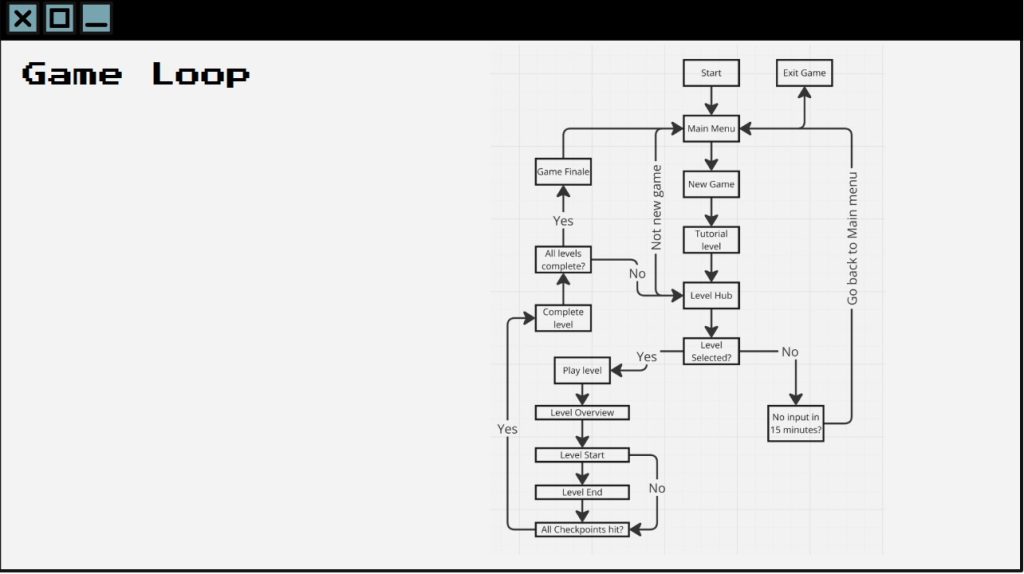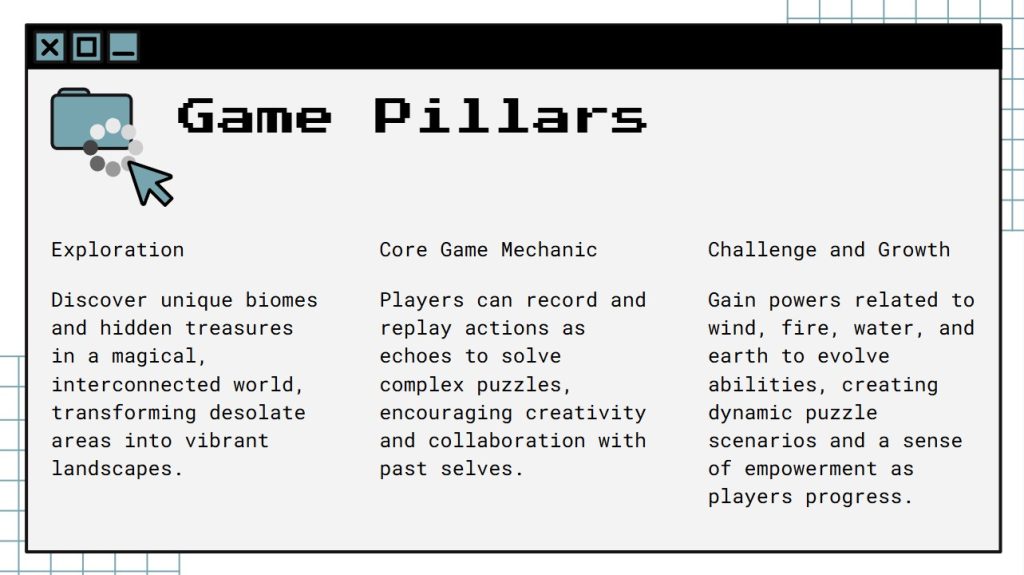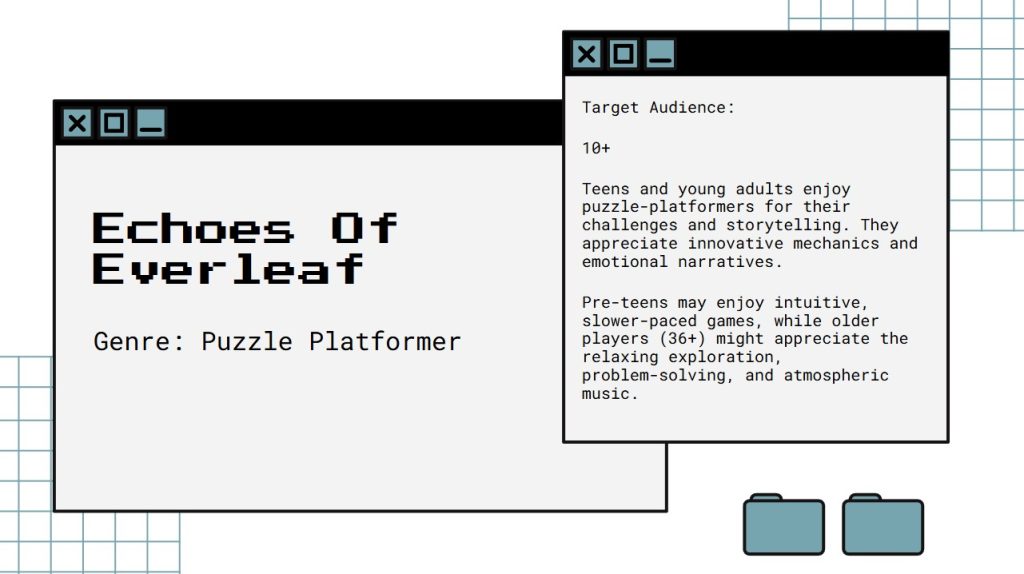Things to add after Critical feedback:
Game Spaces ✅
Moodboard✅
Game Loop✅
Game Pillars✅
Gameplay Systems✅
Pitch Deck
After the feedback week, we had to create a 3-slide pitch deck to present our games in class. The goal was to make a one-page Game Design Document (GDD) that shared the key details about our projects in a short time. Our classmates listened carefully and gave us a mix of positive feedback, useful suggestions, and thought-provoking questions or ideas. Overall, the feedback was mostly positive, pointing out the strengths of our presentations while also offering helpful advice for improvement.



Feedback
Pros
- It’s really exciting to think about how balancing the dynamics between the Real and Shadow Realms can create some truly rewarding puzzles. By focusing on intuitive gameplay, we can ensure that everyone feels engaged and challenged in a meaningful way.
- Floating objects in the Shadow Realm could create opportunities for dynamic puzzles, like using floating platforms to create pathways or triggering switches that are otherwise unreachable.
Cons
- Do you have specific mechanics in mind for how the two realms influence each other, or are you still fleshing that part out?
- Have you considered examples of how the physics might differ between realms?
- Are you also considering unique environmental hazards or mechanics tied to these gravity differences?
Game Audio
This week, we had the privilege of hosting game sound designer Jessica Saunder as our guest speaker. Sound is one of the most critical yet often underappreciated components of game design. It possesses the ability to immerse players within the game world, provide essential feedback, and evoke emotional responses that enhance gameplay. Whether it involves the gentle rustling of leaves in a forest, the distinct clink of a coin being collected, or the powerful crescendo of music during a boss encounter, sound is indispensable for creating a compelling and memorable gaming experience. In its absence, games may feel incomplete, resulting in diminished player engagement.
Ambience and Environmental Sounds
The role of ambience and environmental sounds is vital in establishing atmosphere and defining the tone of the game environment. Background sounds are integral to creating a sense of place and realism, drawing players deeper into the experience. For instance, the distant chirping of birds, flowing water, and the wind rustling through trees can render an open-world forest vibrant and alive. Conversely, unsettling creaks, whispers, and hollow echoes in a horror game can generate tension and unease, maintaining players’ engagement. Well-executed ambient audio enhances the depth of the game’s setting, fostering an emotional connection between players and the virtual environment.
Key Considerations:
– Location
– Type of sound
– Historical context (era)
– Time of day (morning, afternoon, night)
– Presence of creatures, people, or enemies
– Gameplay elements
– Weather conditions
Sound Design
Sound design extends beyond ambience; it encompasses every auditory element meticulously crafted to support gameplay. From the clash of swords and the roar of engines to the impactful thud of a grenade, sound effects are essential for delivering feedback on player actions and events. High-quality sound design ensures that each action feels responsive and rewarding—whether it is the crisp sound of reloading a weapon or the deep rumble signaling an approaching enemy. In multiplayer environments, sound design often assumes a strategic role; distinct sounds, such as footsteps and reloads, can alert players to nearby threats, thus adding layers of tension and strategy to gameplay.
User Interface and Sound Feedback
Sound also plays an essential role in the user interface (UI), providing auditory cues that guide and inform players. UI sounds—such as clicks, beeps, and whooshes—confirm button presses, menu navigation, and various interactions. These auditory signals deliver immediate feedback, making the interface feel responsive and intuitive. For example, a pleasant “ding” can indicate a successful selection, while a sharp error sound may signal an unsuccessful action. Additionally, dynamic sound design can elevate the UI experience, illustrated by the subtle hum of futuristic menus in a science fiction game or cheerful jingles accompanying new achievements in a casual game. While these details may appear minor, they play a significant role in enhancing player satisfaction and usability.
In summary, sound in gaming transcends mere background noise; it serves as a vital storytelling tool, a gameplay mechanic, and a bridge connecting the player to the game world. Whether through ambient audio that establishes the atmosphere, sound effects that enhance gameplay, or UI sounds that promote interactivity, the significance of sound design can hardly be overstated. A thoughtfully designed soundscape enriches the overall gaming experience, transforming a good game into a profoundly immersive one.
Leave a Reply